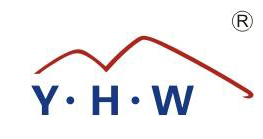Minimizing imperfections and inconsistencies during the production of aluminum roofing sheets is critical to ensuring their uniform performance, durability, and aesthetic appeal. Below are the key methods and processes used in manufacturing to achieve this:
1. Material Selection
High-Quality Alloys : Manufacturers select aluminum alloys specifically designed for roofing applications, such as 3003, 5052, or 6061, which offer excellent corrosion resistance, formability, and strength.
Purity Control : Ensuring low levels of impurities in the raw materials helps maintain consistent mechanical properties and reduces the risk of defects.
2. Precise Rolling Processes
Cold Rolling : Aluminum sheets are rolled to precise thicknesses under controlled conditions to eliminate thickness variations and ensure uniformity.
Tension Control : Applying consistent tension during rolling prevents warping, buckling, or uneven thickness distribution.
Annealing : Heat treatment (annealing) is used to relieve internal stresses and improve the sheet's formability and dimensional stability.
3. Surface Treatment
Cleaning and Degreasing : Sheets are thoroughly cleaned to remove oils, oxides, or contaminants that could affect surface quality or coating adhesion.
Chemical Treatments : Processes like chromate or phosphate conversion coatings enhance corrosion resistance and provide a stable base for painting or laminating.
Anodizing : Electrochemical anodizing creates a durable oxide layer that improves hardness, wear resistance, and color retention.
4. Coating Technologies
Powder Coatings : Uniform application of powder coatings ensures consistent color, texture, and protective properties across the sheet.
Liquid Paints : Advanced spray systems with automated controls guarantee even coverage and minimize streaks or splotches.
Quality Checks : Coated sheets undergo rigorous testing for adhesion, weathering resistance, and gloss uniformity.
5. Quality Control Measures
In-Line Inspection : Automated inspection systems detect defects such as scratches, dents, or thickness variations during production.
Ultrasonic Testing : Used to identify internal flaws, such as voids or inclusions, that may compromise structural integrity.
Dimensional Accuracy : Laser measurement tools verify that sheets meet specified dimensions and tolerances.

6. Post-Manufacturing Processes
Trimming and Cutting : Precision cutting equipment ensures clean edges and accurate sizes, reducing the likelihood of burrs or deformations.
Packaging : Proper packaging protects sheets from damage during transportation and storage, preventing scratches or corrosion.
7. Environmental Controls
Temperature and Humidity Regulation : Maintaining stable environmental conditions during production minimizes oxidation and warping.
Dust-Free Environments : Clean rooms or controlled atmospheres prevent contamination of the sheets during processing.
8. Testing and Validation
Mechanical Testing : Tensile, bend, and impact tests verify the sheet's strength and ductility.
Corrosion Resistance Testing : Salt spray or accelerated weathering tests assess long-term durability in various climates.
Visual Inspections : Final inspections by trained personnel ensure that the sheets meet aesthetic standards before shipment.
9. Continuous Improvement
Feedback Loops : Manufacturers analyze customer feedback and field performance data to refine production processes and address recurring issues.
Technological Advancements : Investing in new machinery and techniques, such as robotic automation and AI-driven quality control, enhances consistency and efficiency.




 English
English русский
русский Español
Español عربى
عربى















